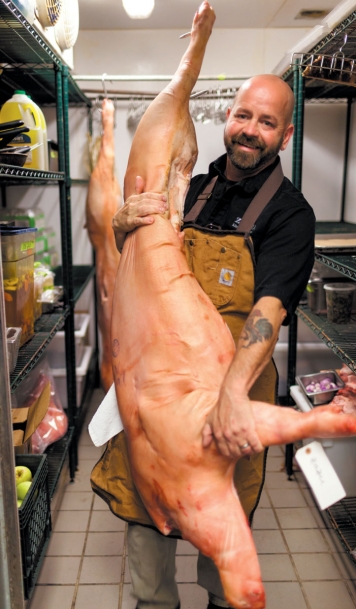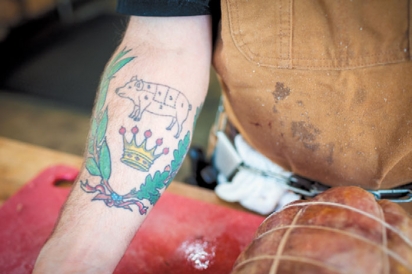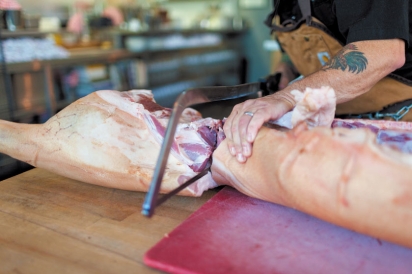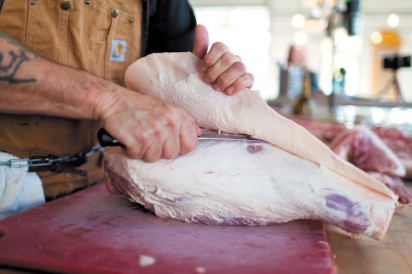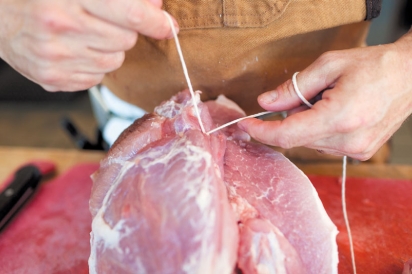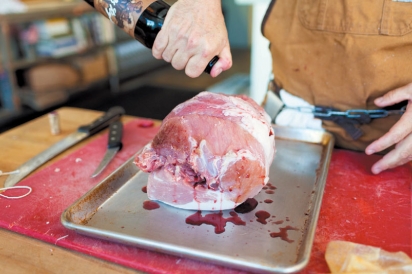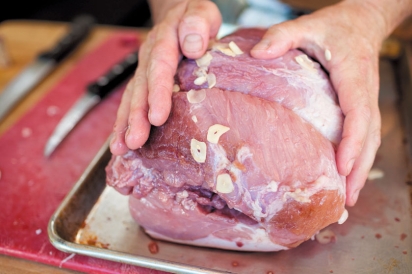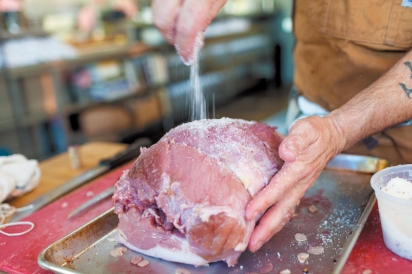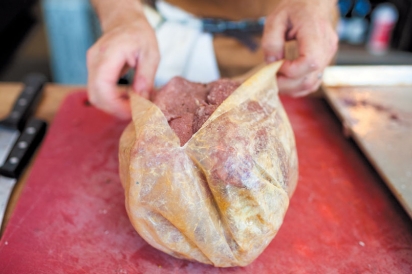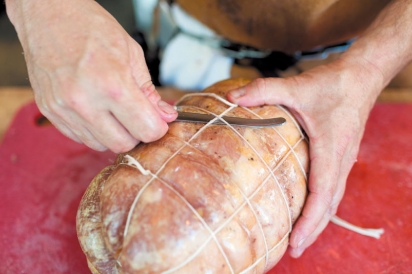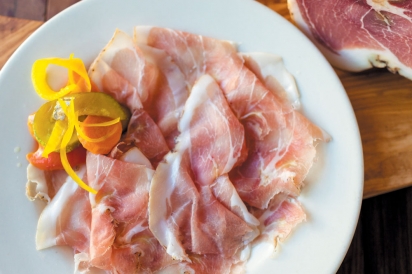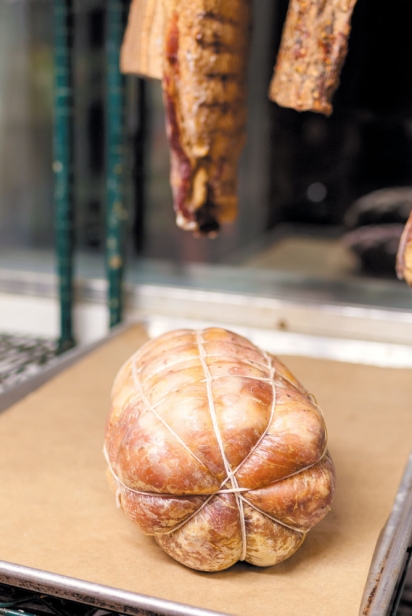Culatello
THE “LITTLE ASS” THAT BECAME THE CROWN JEWEL OF ITALIAN CURED MEATS
One might assume that the king of Italian cured meats would be prosciutto di Parma, but then one wouldn’t be John Stewart, owner with his wife, Duskie Estes, of zazu kitchen + farm in Sebastopol’s The Barlow.
Stewart and Estes are also the owners of Black Pig Meat Co., based in Healdsburg, which specializes in dry-cured and applewood-smoked bacon, and which won a 2016 Good Food Award for its coppa. Not surprisingly, the couple was crowed King and Queen of Porc in the Grand Cochon finale of the nationwide pork cooking challenge, Cochon 555.
All to say that Stewart is undeniably one to be listened to when it comes to comestibles porcine.
According to him, it is culatello that is the superior cured pork product; say, for example, as filet mignon is to chuck in the beef world. Whereas the entire bone-in hind leg of the pig is cured for prosciutto, culatello is made from just the boneless, skinless, de-fatted meatiest muscle from the back of the rear leg.
After a year of aging, the flavor of culatello is sweet and luscious, rich and complex, its texture silky. The longer it ages, the more smooth and melting it becomes. Some culatelli are aged for three years or more.
The art of making culatello has been practiced in the Po River Valley in Northern Italy for more than 500 years. The city of Zibello is the heart (and soul) of culatello production, owing to the moist fog that rises from the river there, encouraging the growth of an autochthonous mold that imparts the uniquely sweet and musky flavor to the meat. The same mold that prevents Culatello di Zibello DOP (Protected Designation of Origin) from being importable into the United States—per USDA rules.
Stewart, being a take-charge kind of guy, decided that if culatello couldn’t come to him, he’d go to culatello. And so he did, making the pilgrimage to Zibello last February to learn from the world’s undisputed master of culatello, Massimo Spigaroli. Spigaroli and his forebears have been making culatello for generations.
“When you’re born into a family like this,” Spigaroli says, “you can’t do anything else.”
Spigaroli cures around 7,000 culatelli each year, of the approximately 30,000 total produced in the region (compared to around 10 million prosciutti). He serves the meat at two restaurants located on Antica Corte Pallavicina, the historic estate he owns with his brother, and sells the remainder to top restaurants and food emporiums throughout Italy. At very handsome prices.
His tutorial complete, Stewart returned home to Sonoma County, where he raises a few pigs himself and sources others from like-minded local farmers, and set about producing his own culatello, which, I can personally attest, is of such superior quality that ordinary prosciutto pales in comparison.


